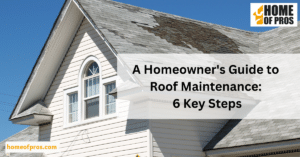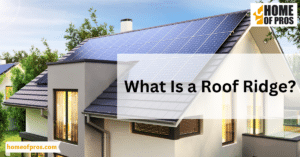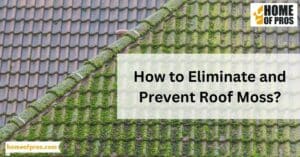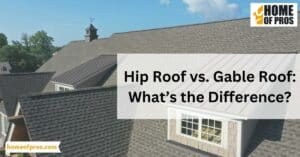Are you looking for an eco-friendly way to enhance the aesthetic and energy efficiency of your home? Consider green roofing!
Green Roofing: Sustainable and visually appealing, green roofs offer improved energy efficiency, and stormwater management, and enhance urban biodiversity. Our blog post explores their benefits for eco-conscious homeowners, covering installation, maintenance, and the positive impact on the environment. Embrace green roofing for a greener and more sustainable home!
In this blog post, we’ll explore the benefits of green roofing and provide some tips on finding the right products and installation services. So, let’s get started!
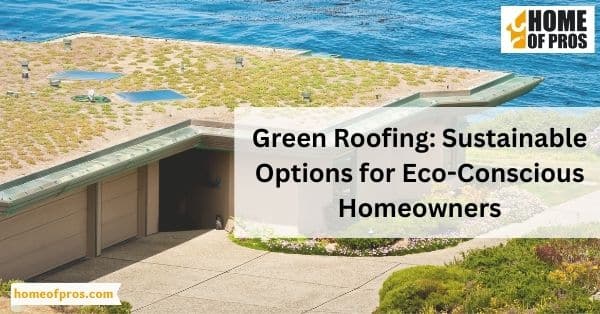
What is Green Roofing?
Green roofing, also known as a living roof, is an innovative roofing system that involves the incorporation of vegetation and other greenery on the roof surface. Essentially, green roofing involves the installation of a waterproof roofing membrane that provides a foundation for plants and other vegetation to grow on.
These types of roofs have become increasingly popular in recent years due to their inherent ability to provide several environmental benefits. In addition to improving the air quality within urban areas, green roofing has been shown to help regulate temperature extremes, reduce energy costs, and protect roof coverings from harmful UV rays.
This makes green roofing an excellent choice for eco-conscious homeowners who are looking for unique and sustainable ways to help decrease their carbon footprint.
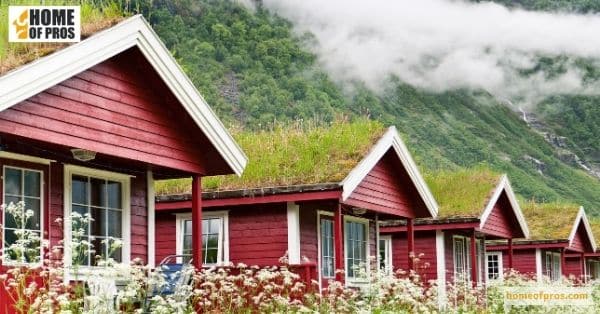
Benefits of Green Roofing
Green roofing is an environmentally friendly approach to constructing buildings that have gained popularity in recent years. This type of roofing involves the installation of vegetation, soil, and a waterproofing membrane on top of a traditional roof, creating a layered system that connects the building to nature. The benefits of green roofing:
- Enhanced Sustainability
- Improved Energy Efficiency
- Increased Biodiversity
- Reduced Stormwater Runoff
- Enhanced Air Quality
In addition to being an eco-friendly option, green roofing has been shown to increase property values and create a sense of community by providing urban green space.
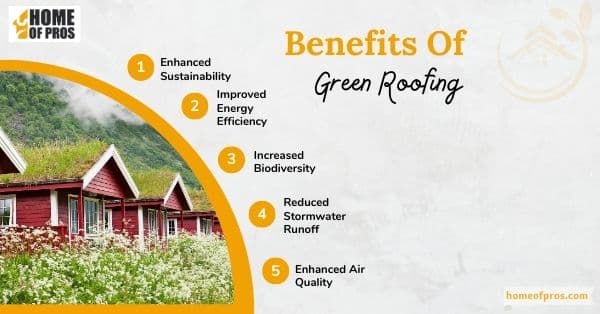
Types of Green Roofing Systems
Extensive Green Roofs
These are lightweight and low-maintenance green roofing systems that consist of a thin layer of vegetation, typically with shallow-rooted plants like sedums or grasses. They require minimal irrigation and are ideal for flat or low-slope roofs.
Intensive Green Roofs
Unlike extensive green roofs, intensive green roofs have a thicker growing medium and support a wider variety of plant species, including shrubs and trees. They require more maintenance and structural support due to the additional weight but offer greater aesthetic appeal and recreational space.
Modular Green Roofs
These green roofing systems are pre-planted in modular units that can be easily installed and replaced. They are suitable for both extensive and intensive applications, offering flexibility and ease of maintenance.
Semi-Intensive Green Roofs
Combining characteristics of both extensive and intensive green roofs, semi-intensive green roofs feature a medium-depth growing medium that supports a diverse range of vegetation. They strike a balance between aesthetics and maintenance requirements, offering more design options compared to extensive roofs while being less demanding than intensive roofs.

Advantages of Green Roofs
Green roofs, also known as living roofs, have taken the world by storm as an environmentally-friendly alternative to traditional, concrete-heavy rooftops. These roofs are made up of layers of vegetation, soil, and drainage systems that create a thriving ecosystem, while also providing a plethora of advantages.
Improved Energy Efficiency
Green roofs act as a natural insulating layer, reducing heat transfer between the building and the environment. This helps to regulate indoor temperatures, reducing the need for heating and cooling, and ultimately leading to lower energy consumption and cost savings.
Stormwater Management
Green roofs absorb and retain rainwater, preventing it from overwhelming stormwater systems and reducing the risk of flooding. The plants and soil on green roofs act as a natural filtration system, purifying the rainwater and reducing the amount of pollutants that enter water bodies.
Enhanced Biodiversity
Green roofs provide a habitat for various plants, insects, and birds, promoting urban biodiversity. They can act as green corridors, connecting fragmented habitats in urban areas and supporting local ecosystems. The presence of green roofs contributes to the overall health and resilience of urban ecosystems.
Although green roofs require careful planning and installation, their numerous benefits make them a worthwhile investment for a sustainable future.
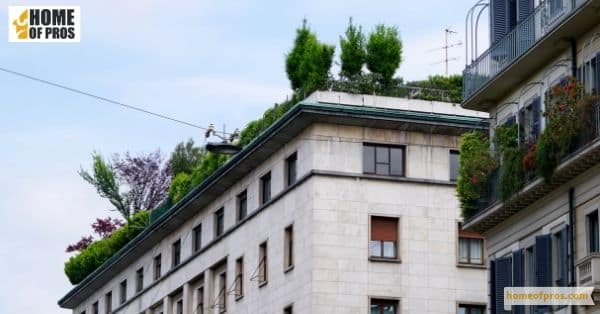
Installation and Maintenance of Green Roofs
Installation and maintenance are crucial aspects of ensuring the long-term success and effectiveness of green roofs. Here are some key considerations:
Installation:
- Structural Assessment: Assessing the building’s capacity to support the additional weight of the green roof.
- Waterproofing and Drainage: Installing a waterproof membrane and drainage systems to prevent leaks and manage water effectively.
- Selection of Growing Medium and Vegetation: Choosing appropriate soil and plant varieties based on the green roof type and local climate.
Maintenance:
- Irrigation: Providing initial watering for plant establishment and minimal ongoing irrigation for extensive green roofs.
- Weed Control: Implementing strategies to prevent weed growth and competition with desired plants.
- Fertilization and Nutrient Management: Applying environmentally friendly fertilizers and monitoring soil health.
- Pruning and Maintenance of Vegetation: Regular pruning and cleaning to maintain plant shape and remove debris.
- Inspections and Repairs: Conduct routine inspections, identifying issues, and promptly addressing them to ensure the green roof’s integrity.
By following proper installation procedures and implementing regular maintenance practices, homeowners can ensure that their green roofs continue to provide environmental benefits, improve energy efficiency, and enhance the overall sustainability of their homes.
Consulting with professionals experienced in green roof installation and maintenance can provide valuable guidance throughout the process.
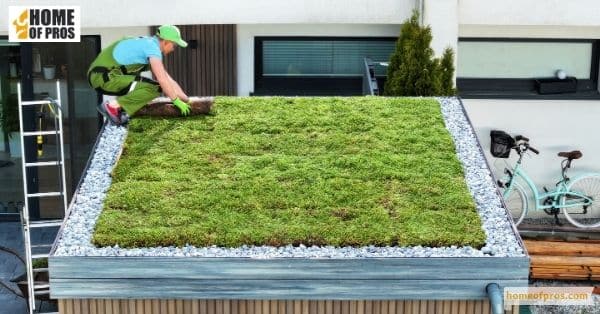
In conclusion
Green Roofing is becoming a popular option for homeowners who are committed to sustainability. Not only does this type of roofing provide benefits to the environment, but it can also reduce energy costs and extend the lifespan of a roof.
With a variety of options to choose from, including extensive and intensive green roofs, homeowners have the ability to tailor their roofing system to their specific needs and preferences.
Green Roofing is not only a smart choice for eco-conscious homeowners, but it is an investment in the future of our planet. As we continue to prioritize sustainability, it is reassuring to know that there are viable and practical options available for those seeking to reduce their environmental impact.



